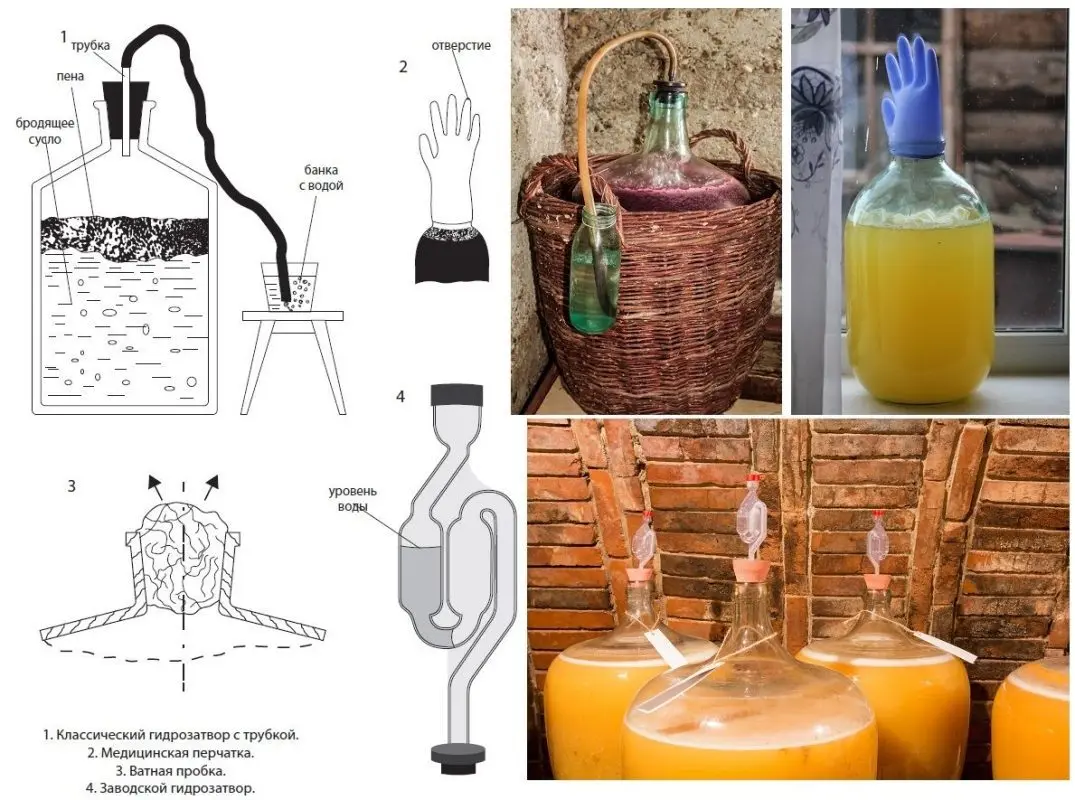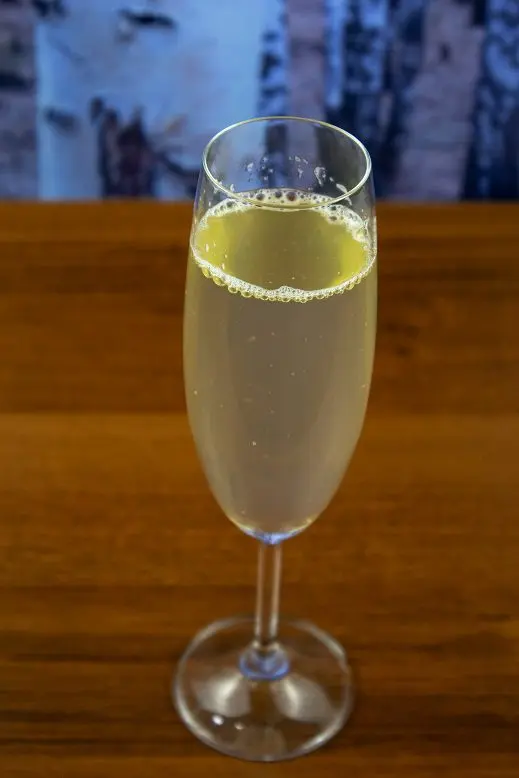Contents
Sparkling (carbonated) wine made from birch sap is a moderately strong (7-10 degrees) drink with an original, incomparable taste, which is ideal for quenching thirst in hot weather. I bring to your attention a classic recipe for raisin sourdough.
Theory
First, we will make young birch wine, and then carbonize it – add a little sugar and seal it tightly in bottles. Sugar will cause secondary fermentation, which will saturate the wine with carbon dioxide. The result will be homemade champagne (due to the peculiarities of the technology, it is more correct to call this drink birch sap cider, but this does not affect the taste in any way).
Ingredients:
- birch sap – 12 liters;
- sugar – 2 kg + 10 grams per liter of wine;
- citric acid – 5 grams;
- raisins – 100 grams (or wine yeast per 15 liters of must);
- dark honey – 50 grams (optional).
To make champagne, you need not sour birch sap: fresh or canned. Citric acid stabilizes the acidity of the must, which contributes to normal fermentation. Honey gives homemade champagne a golden hue and a light sweetish aroma.
Attention! If, instead of sourdough or wine yeast, you add ordinary dry or pressed ones, as suggested in many recipes, then instead of champagne you get a fizzy mash with a nasty taste and a characteristic alcohol smell.
I advise you to prepare bottles for birch champagne in advance. They must be hermetically sealed and withstand gas pressure. The best option is plastic bottles of any capacity. They must be washed and dried before use.
birch sap champagne recipe
1. If there is no wine yeast, make raisin sourdough 3-4 days before working with juice. To do this, put raisins in a jar, add 25 grams of sugar and 150-200 ml of water (birch sap), mix.
Cover the jar with gauze and place in a dark place at room temperature. When foam appears on the surface, a slight sour smell and hiss, the sourdough is ready. It can be tightly closed and stored in the refrigerator for up to 10 days.
If mold has accumulated on the surface, it means that an infected raisin has come across, you need to take another one. Moldy sourdough must not be used!
2. In a large enamel saucepan, mix birch sap, citric acid and sugar (2 kg). Bring the mixture to a boil, boil over low heat until 75% of the liquid of the original volume remains in the container.
Boiling increases the concentration of solids in the juice and breaks down sugar into fructose with sucrose (inversion). As a result, the taste of birch champagne is more intense, the aroma is more pleasant, and the fermentation lasts less.
3. Cool the wort to 25°C (otherwise the yeast will die from the heat). Add starter along with raisins or wine yeast, add honey (optional), mix well.
4. Pour the wort into the fermentation vessel. Install a water seal or medical glove with a hole in the finger to remove carbon dioxide. Move the container to a dark place with a stable temperature of 18-25°C.

5. After 20-40 days, fermentation will end: the water seal will stop emitting gas (the glove will deflate), foam will disappear on the surface, a layer of sediment will appear below, and the young birch wine itself will become lighter. The drink is ready for carbonation.
At the bottom of the bottles add 10 grams of sugar per liter of volume. Drain the young wine from the sediment through a straw and pour into bottles, leaving at least 5-6 cm of free space from the neck (more can be).
6. Seal the bottles tightly with stoppers. Put for 7-10 days in a dark room at room temperature. After a couple of days, plastic bottles will become hard.
Once a day, you need to check the gas pressure, if the container is very swollen, transfer it to the refrigerator or bleed some of the gas, otherwise the bottle may burst.
7. After saturation with carbon dioxide, transfer the finished champagne from birch sap to a refrigerator or cellar with a temperature of 3-12°C. Before drinking, keep the drink in the cold for 2-4 days. The shelf life of homemade birch champagne, if stored in a refrigerator or cellar, is 5-6 months. Fortress – 7-10%. A small layer of sediment may appear on the bottom.










